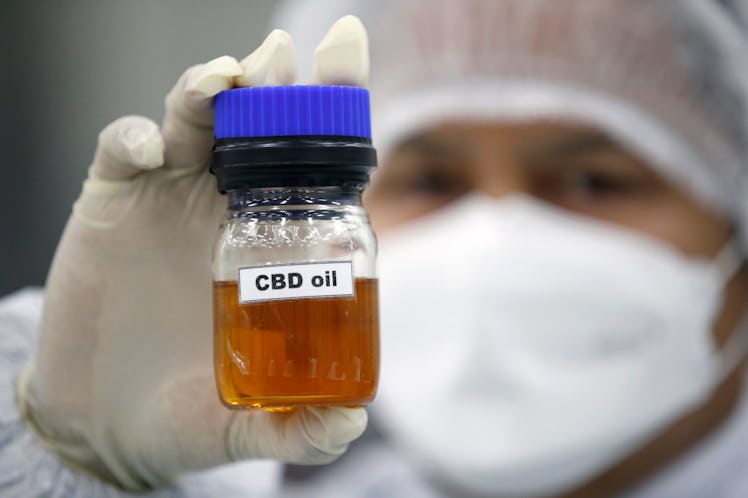In the not-so-distant past, marijuana was cast as the nefarious antagonist in the saga of American drug policy, demonized by anti-drug campaigns and sensationalized commercials of teenage drug dealers luring their peers to ruin. Since the legalization of cannabis for medical use in California in 1996 and, later, recreational use by various states in 2012, the devil’s lettuce lost its sinister reputation, instead gaining increasing public support. In fact, seven in 10 Americans believe marijuana use should be legalized, according to a 2023 Gallup poll; cannabis use among adults aged 35 to 50 reached a historic high in 2022 at 28 percent, from 13 percent a decade prior.
Support is fed into marijuana’s laundry list of supposed health benefits: reducing anxiety, alleviating chronic pain, and treating debilitating mental health conditions like post-traumatic stress disorder. This seeming panacea-esque portrayal has quickly catapulted “Mary Jane” to mainstream use and high consumer demand.
Despite this, we have very little evidence supporting marijuana’s safety in humans. In fact, there’s emerging research suggesting cannabis use, whether medically or recreationally, poses a strong risk for undesirable cardiovascular outcomes like heart attack and stroke or detrimentally affects brain development in adolescents and, to some extent, adults. Marijuana has also been linked to negative impacts on male fertility and possibly weakening the immune system.
Does this mean all forms of marijuana use are bad? Not necessarily, says R. Lorraine Collins, a psychologist at the University at Buffalo and director of its Center for Cannabis and Cannabinoid Research. “It’s a very complicated question,” Collins tells Inverse. “It’s one of the things I want to get people to understand that this is not a yes or no question. Cannabis is very much a mixed bag.”
Is marijuana good for you?
Marijuana contains over 100 chemicals called cannabinoids, the two well-known being cannabidiol (or CBD) and tetrahydrocannabinol (or THC). These two chemicals interact with your body in different ways, with THC responsible for most of marijuana’s psychological effects and CBD being non-psychoactive. Researchers used to think CBD counteracts or balances out THC’s negative effects, like anxiety and paranoia. However, new research in recent years suggests that doesn’t seem to be the case, and at least when consuming cannabis, high doses of CBD prevent the breakdown in THC, making the drug’s sensations last longer.

It’s believed these cannabinoids interact with the body’s endocannabinoid system (or ECS), an ancient cell signaling network crucial for maintaining homeostasis in the brain and throughout the body. Receptors for this system were first discovered in the late 1980s, alongside the discovery that we naturally produce cannabinoids, called endogenous cannabinoids (endocannabinoids for short).
Some studies have found that cannabinoids like THC and CBD may have therapeutic benefits. For example, cannabis may help treat or prevent nausea and vomiting associated with cancer drugs. One such synthetic THC, called dronabinol, was approved by the U.S. Food and Drug Administration in 1985. Early evidence from laboratory and clinical studies and anecdotal reports found marijuana may help with controlling seizures. In 2018, this led to the FDA approving Epidiolex, an oral solution containing CBD (obtained through hemp, a variety of cannabis), for severe epilepsy.
For conditions like chronic pain, whether marijuana is helpful becomes a bit murkier and elusive. Two systematic reviews published in 2017 by the journal Annals of Internal Medicine found there wasn’t enough scientific evidence cannabis could alleviate pain connected to nerve damage, called neuropathic pain, and that there was even less research supporting the benefit of marijuana for treating PTSD, Inverse previously reported.
This lack of conclusive evidence is emblematic of the current state of marijuana research, says Robert Page, a professor in the departments of clinical pharmacy and physical medicine at the University of Colorado Anschutz Medical Campus.
“The problem is that a lot of the data that are published are retrospective [looking back at existing data] or observational,” Page tells Inverse. “What that means to the lay public is that I can only say with confidence that 95 percent of the time, this is an association, not necessarily a causation.”

An employee holds bottles of Epidiolex, a cannabinoid-based medicine, at the GW Pharmaceuticals Plc facility in Sittingbourne, U.K. The country is the biggest producer of cannabis for medical and scientific purposes, according to the United Nations.
In 2017, Collins and colleagues at various academic institutions co-wrote a report published in the National Academies of Sciences, Engineering, and Medicine that reviewed thousands of cannabis studies and found that there was a huge gap in the knowledge about the risks and benefits of cannabis use.
Collins says what underlies this huge gap is the lack of human studies, which are currently difficult to conduct since marijuana is still classified as a Schedule I controlled substance, which also includes heroin, lysergic acid diethylamide (or LSD), and ecstasy.
“[The federal regulations] have been a huge barrier to getting human research and, as an alternative, you see animal research, especially in areas like, for example, the effects of cannabis on the fetus,” she says.